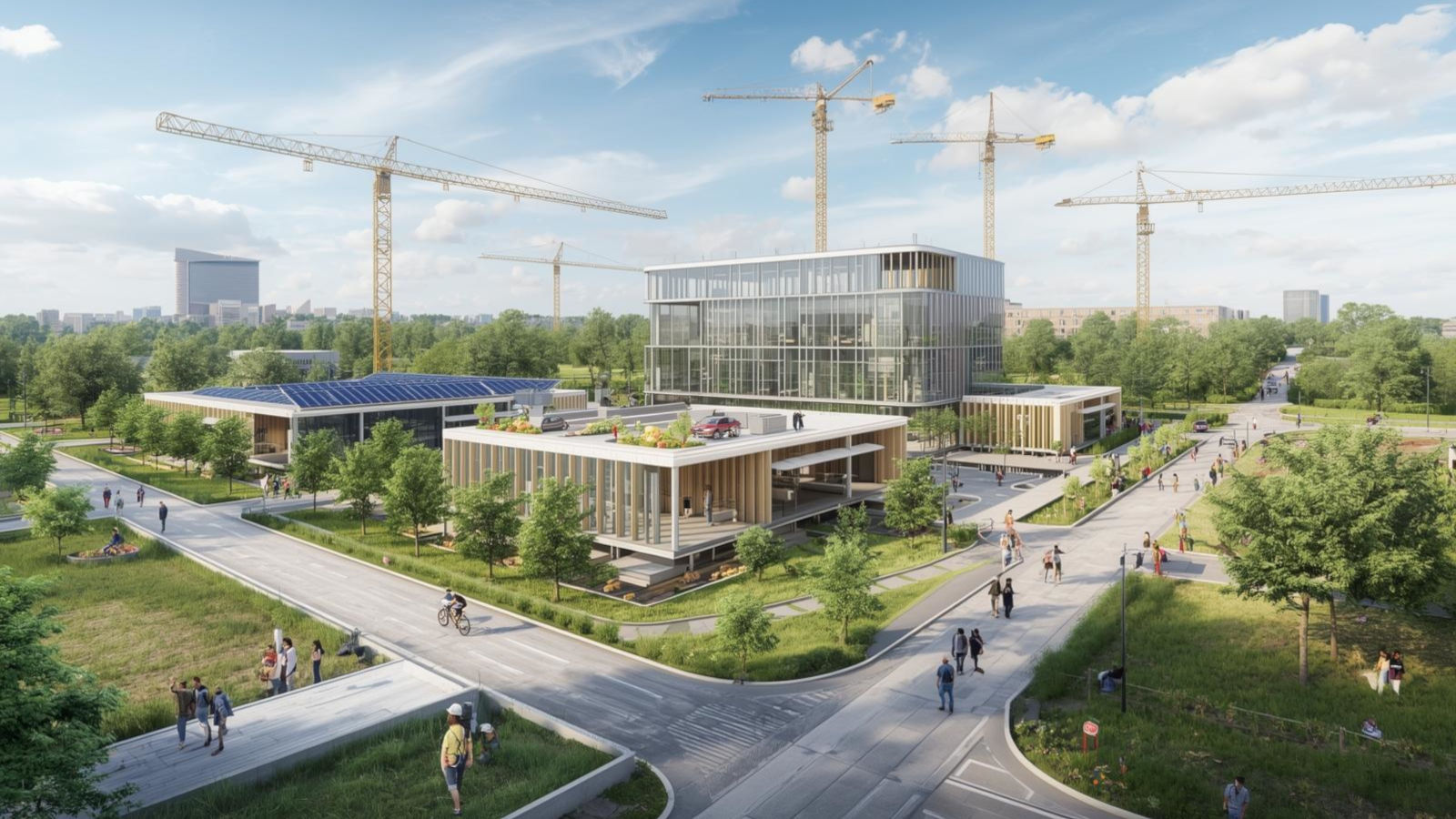
The first CSRD reports in construction and real estate highlight strong ESG integration, stakeholder-driven materiality, and a focus on decarbonization – especially Scope 3 emissions. Biodiversity and water management are increasingly strategic, driven by regulation and ecological risks. Companies are adopting systemic approaches to sustainability, transparency, and long-term resilience. All key issues will be debated at the 100th Euroconstruct conference in Paris on November 25th. Join the conversation!
Methodology
The following findings are based on an analysis of the CSRD reports of 41 companies from 15 different countries. These companies can be classified into four categories:
- Construction/civil engineering
- Property development
- Real estate
- Technical services and renovation
The analysis conducted by BDO focused on companies with a median revenue of €5.5 billion and a median workforce of 5,300 employees.
Companies transform their core operations through ESG integration and stakeholder engagement
The studied companies are progressively integrating ESG into their business models and value chains
The first CSRD reports in the construction and real estate sector show that companies are actively embedding ESG (Environmental, Social, Governance) considerations into their business models and value chains.
In their reports, companies clarify the resources used, strategic priorities, and value created, making the process more transparent. Value chain analysis is used to identify both direct and indirect impacts, ensuring that all stakeholders—internal and external—are considered throughout the lifecycle of products and services.
Stakeholder engagement is becoming a strategic driver for identifying material ESG topics
The sector stands out from other industries by involving internal stakeholders (100%), clients (71%), and investors (63%) at high rates. This broad engagement strengthens the double materiality assessment, which evaluates both the societal/environmental impact and the financial relevance of ESG topics.
The most material ESRS standards for the construction and real estate sector are
- E1 (climate change),
- S1 (working conditions),
- G1 (governance),
- Water (E3) and biodiversity (E4) are emerging as especially critical compared to other sectors.
ABOUT THE AUTHOR
Arthur Cluet
BDO Advisory
Arthur Cluet is a Director at BDO Advisory France, where he plays a key role in guiding clients through complex strategic and financial challenges. With a background in finance, economic analysis and data science, Arthur has previously held roles at BIPE (a French strategy consulting firm), Natixis AM and AssetFI MS (a French investment boutique). Arthur has contributed to various commercial due diligence, strategic plan, and market study, mostly for infrastructure, construction, and real estate businesses. Arthur also has interest in sustainability professionally and personally.
ABOUT THE AUTHOR
Roch-Eloi Grivet
BDO Advisory
Roch-Eloi is a graduate of Sciences Po Lille (master's degree in public administration) and of the Sorbonne (master's degree in public administration and preparation for the civil service exams). He contributes to the elaboration of forecasts in the field of construction for France and Europe (EUROCONSTRUCT). He works more particularly on non-residential buildings and public works. He also contributes to the macroeconomic team. His key skills are construction and building forecasts and sustainability.
“Climate change, circular economy and biodiversity are the key material impact”
Companies tackle environmental challenges by advancing decarbonization and biodiversity strategies
Decarbonization is a central pillar of CSR strategies, but the sector faces significant challenges due to the dominance of Scope 3 emissions
Scope 3 account for nearly 98% of the sector’s carbon footprint. While 61% of companies have a transition plan (above the cross-sector average), only 15% use internal carbon pricing. Innovative approaches, such as Nexity’s bonus/malus system, are rare .
Various case studies made by BDO (e.g., Bam, Altarea, Covivio) illustrate the complexity of reducing indirect emissions and the need for systemic, collaborative solutions, especially as direct emissions (Scopes 1 and 2) are easier to control.
Between regulatory pressure and ecological dependencies, biodiversity is a key issue for the sector
Biodiversity and water resource management have become structuring issues, driven by regulatory frameworks (such as France’s “ZAN 2050” law) and ecological dependencies. 63% of companies (and 90% of French firms) now report biodiversity indicators, far above the average for all sectors. Companies are mapping water stress (e.g., Altarea’s use of the Aqueduct tool) and quantifying biodiversity impacts across their value chains (e.g., Nexity, Unibail Rodamco Westfield). These efforts reflect a growing recognition that managing ecological risks is not only a compliance requirement but a strategic imperative for long-term resilience.
BDO delivers a data-driven analysis of CSRD challenges for construction and real estate.
All key issues will be debated at the 100th Euroconstruct-Conference in Paris on 25th November 2025.
Join the conversation!
ABOUT THE AUTHOR
Arthur Cluet
BDO Advisory
Arthur Cluet is a Director at BDO Advisory France, where he plays a key role in guiding clients through complex strategic and financial challenges. With a background in finance, economic analysis and data science, Arthur has previously held roles at BIPE (a French strategy consulting firm), Natixis AM and AssetFI MS (a French investment boutique). Arthur has contributed to various commercial due diligence, strategic plan, and market study, mostly for infrastructure, construction, and real estate businesses. Arthur also has interest in sustainability professionally and personally.
ABOUT THE AUTHOR
Roch-Eloi Grivet
BDO Advisory
Roch-Eloi is a graduate of Sciences Po Lille (master's degree in public administration) and of the Sorbonne (master's degree in public administration and preparation for the civil service exams). He contributes to the elaboration of forecasts in the field of construction for France and Europe (EUROCONSTRUCT). He works more particularly on non-residential buildings and public works. He also contributes to the macroeconomic team. His key skills are construction and building forecasts and sustainability.
